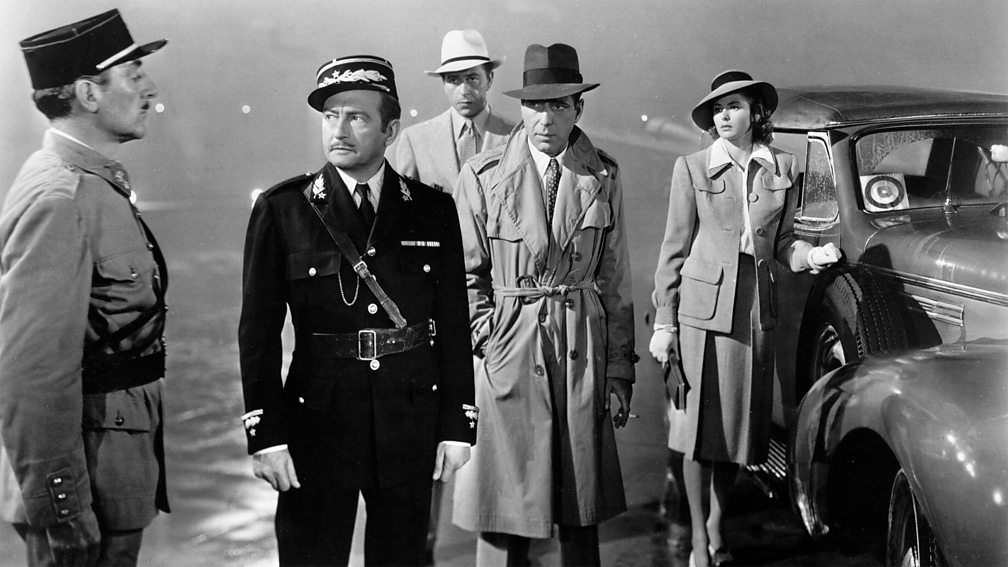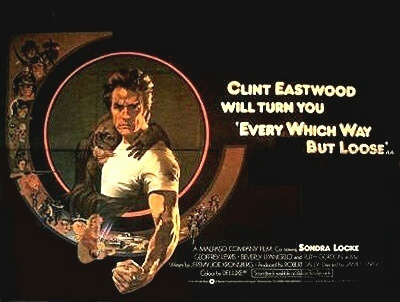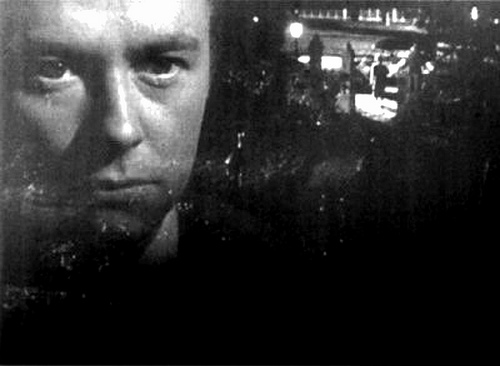Market Research posts
Tuesday February 18, 2020
‘Louis, I think this is the beginning of a ó Watch out! Behind that pier!’

From “City of Nets: A Portrait of Hollywood in the 1940s,” by†Otto Friedrich. This is in a section on “Casablanca”: the making/marketing of:
There was such indecision about [which man Ilsa would choose] that the authorities finally decided to shoot both possibilities. “They were going to shoot two endings,” Miss Bergman said, “because they couldn't work out whether I should fly off by airplane with my husband or stay with Humphrey Bogart. So the first ending we shot was that I say good-bye to Humphrey Bogart and fly off with Paul Henreid.†.†.†. And everybody said. ‘Hold it! That’s it! We don't have to shoot the other ending.' ” Even that ending, with Bogart and Rains walking off into the night, needed a closing line. One version was that Bogart would say, “Louis, I might have known you'd mix your patriotism with a little larceny.” Wallis claimed that he was the one who thought of something better: “Louis, I think this is the beginning of a beautiful friendship.” And even then, they didn't know what they had achieved.
At a sneak preview in Huntington Park, the audience seemed mildly pleased, but several viewers handed in cards that said the ending seemed unclear. Would Bogart and Rains be arrested? Wallis ordered a new closing scene written, in which Bogart and Rains escaped from Casablanca on a freighter. And somebody in the publicity department said a new title should be found, because Casablanca sounded like a brand of beer.
Can you imagine if they'd listened? Filmed more? Showed their flight out of Casablanca? But I assume most people in Hollywood know that if your test-screen audiences says they want more, then you‘ve got ’em.†
Friday November 18, 2011
Clint Eastwood Doesn't Have Much Truck with Market Research
“When The Gauntlet didn't do as well as hoped, Warners became concerned that Eastwood was making the wrong choices. He always had a streak of Burt Reynolds redneck humor about him, and when he wanted to play opposite an orangutan in Every Which Way But Loose, Warners' did some market research that indicated a negative reaction to the title, to the orangutan, and even to the idea of Dirty Harry in a comedy. But Eastwood doesn't have much truck with market research and went ahead anyway. It cost about $8 million and grossed about $85 million (about $150 million in today's dollars*), making it his biggest film.”
--Peter Biskind, in the article “Any Which Way He Can,” in his book “Gods and Monsters.”
* The article was written in the early 1990s. So that $85 milliion in 1978, which made it the no. 4 box office hit of the year, which was $150 in 1993 dollars, is approximately $289 million today.

Thursday November 10, 2011
Market Research: Product Planning Based on the Opinions of Schoolgirls
What's wrong with Market Research? Plenty according to IT consultant, author and developer Isseki Nagae (in translation from the Japanese):
Large advertising companies have long invested huge sums of money in conducting studies based on research, customer surveys and interviews. I myself have participated in such studies. At the big advertising agencies they round up users and market to them as reps from the manufacturing companies watch, sometimes through one-way mirrors. Iíve heard of some companies that go so far as to base their product planning on the opinions of schoolgirls. Will this type of planning seriously result in a hit product? I don't think so, and ... neither did Steve Jobs. Iíve actually been to many of these marketing focus groups, and I can tell you that no great ideas come of them.
He then quotes Steve Jobs on the matter:
Itís not the consumersí job to know what they want.
And:
Itís really hard to design products by focus groups. A lot of times, people donít know what they want until you show it to them.
See also:
- Pomona's reaction to “The Magnificent Ambersons.”
- Market research's initial reaction to “All in the Family” and “The Mary Tyler Moore Show.”
- Audience test scores and “The Office.”
Friday September 16, 2011
The Magnificence of the Ambersons Was Conspicuous to All ... Except that Audience Survey Group in Pomona
“We do not need trouble pictures, especially now. ... Make pictures to make us forget, not remember.”
“People like to laff, not be bored to death.”
“The picture was a masterpiece with perfect photography, setting and acting. It seemed too deep for the average stupid person. I was disgusted with the way some people received this picture.”
These comments, taken from David Thomson's book, “Rosebud: The Story of Orson Welles,” pg. 215, are among the response cards (53 favorable, 72 unfavorable) for the March 17, 1942 screening of Orson Welles' original version of “The Magnificient Ambersons,” at the Fox Theater in Pomona, Calif. It was this audience survey, this market research, that led to some of the most infamous cuts and perhaps the most horribly re-shot and re-edited ending in movie history. Add it to the list.
Way to go, average stupid person.

“The magnificence of the Ambersons was as conspicuous as a brass band at a funeral.” Unless, of course, you lived in Pomona.
Sunday June 27, 2010
How Market Research Almost Destroyed the Most Popular Shows in TV History
I'm late to the Maclolm Gladwell parade. I read his stuff in the New Yorker but didn't check out any of his books until I had to read “Outliers” for workóI interviewed M&A lawyer Joseph Flom, who is the subject of that book's fifth chapter, “The Three Lessons of Joe Flom”óand was particularly impressed, not only with the Flom chapter, but with the first chapter, in which Gladwell dissects the success of youth hockey players in Canada and the puzzle over the preponderence of early-month birthdates among them. Lots of January, February and March babies playing in the NHL. Why? January 1 is the cut-off date for youth hockey, so at an early age a January 1st kid will be competing against a December 31st kid and have a year advantage in growth and coordination. That January kid will play in more tournaments, and get more coaching and practice, and what began as an accident of birth will become a self-fulfilling prophecy: He'll be better. We're never the meritocracies we think we are.
“Blink” isn't quite as good but I did enjoy the chapter, “Kenna's Dilemma,” for its confirmation of my own thoughts on audience test scores. Two years ago, when this blog was a baby, I wrote how “The Office” (both versions) got some of the lowest audience test scores in their respective networks' histories, as did “Seinfeld.” I asked:
If you donít recognize Seinfeld and The Office and The Office for what they are, or what they might be, what good are you? How many other Seinfelds are you turning into something ordinary and short-lived? How many millions are the money-people blowing?
 Thanks to Gladwell, here are a few more names to add to the list:
Thanks to Gladwell, here are a few more names to add to the list:
In the late 1960s, the screenwriter Norman Laer produced a television sitcom pilot for a show called All in the Family. ... All in the Family scored in the low 40s [out of 100, in market research]. ABC said no. Lear took the show to CBS. They ran it through their own market research program... The results were unimpressive. The recommendation of the research department was that Archie Bunker be rewritten as a soft-spoken and nurturing father. CBS didn't even bother promoting All in the Family before its first season. What was the point? The only reason it made it to the air at all was that the president of the company, Robert Wood, and the head of programming, Fred Silverman, happened to like it...
That same year, CBS was also considering a new comedy show starring Mary Tyler Moore. ... The [market research] results were devastating. Mary was a “loser.” Her neighbor Rhoda Morgenstern was “too abrasive”...
“Archie Bunker [should] be rewritten as a soft-spoken and nurturing father.” That's one of my new favorites.
In case the lesson isn't obvious, Gladwell drives it home:
The problem with market research is that often it is simply too blunt an instrument to pick up this distinction between the bad and the merely different.
I wrote much the same a year ago January, regarding a Tad Friend New Yorker piece about audience testing, in which it was mentioned that “Pulp Fiction” received some of the lowest test scores in its studio's history and “Akeelah and the Bee” received some of the highest.
“Pulp Fiction,” “All in the Family,” “The Mary Tyler Moore Show,” “Seinfeld,” “The Office,” “The Office.”
Others?
Monday June 02, 2008
Audience test scores and “The Office”
I’m not the first guy to not get fashion magazines. You take the world’s best-looking people, give them the world’s best make-up artists and hairstylists and photographers, airbrush out what imperfections remain...and half the time they still look like heroin addicts. But Patricia subscribes to a few of these things and sometimes they’re worthwhile. The W magazine with Charlize Theron on the cover includes an article on Ricky Gervais of The Office fame, horribly titled “Tricky Ricky,” in which we get the following:
Before The Office premiered on the BBC in 2001, Gervais recalls, the show received the lowest audience test scores in the network’s history, but he defended every word in the script. It was a similar story with the American version: Gervais remembers getting an e-mail from producer Greg Daniels saying the series had scored abysmally. “I sent back a message: ‘Brilliant, so did we,’” he says. Now, he points out, The Office is NBC’s highest-rated sitcom. “All the things I’ve ever loved, I hated at first,” Gervais adds. “the best things are an acquired taste.”
For the writer, Paul Quinn, the point of this story is that Gervais’ apparent self-assurance, “rooted in defensive smugness or genuine confidence,” helped save his greatest creation. Here’s the lesson to me: Audience testing sucks. Seriously. It was the same story for Seinfeld, which became one of the most successful sitcoms in TV history. But the initial test scores reflected an audience distaste. People didn’t like it because they didn’t get it. It wasn’t familiar.
One wonders if testers are attempting to fix this obvious problem with innovative shows and movies. Forget aesthetics for a moment. Just think of the money. These things are cash cows. Cash cows with long fucking lives. And the money people, whose job it is to find such cash cows, when confronted with them, actually try to turn them into something else.
If you don’t recognize Seinfeld and The Office and The Office for what they are, or what they might be, what good are you? How many other Seinfelds are you turning into something ordinary and short-lived? How much money are the money-people blowing?
All previous entries
Baseball's Active Leaders, 2023
What Trump Said When About COVID
Recent Reviews
Everything Everywhere All at Once (2022)
Black Panther: Wakanda Forever (2022)
Doctor Strange in the Multiverse of Madness (2022)
Spider-Man: No Way Home (2021)
The Cagneys
A Midsummer Night's Dream (1935)
Something to Sing About (1937)
Angels with Dirty Faces (1938)
A Lion Is In the Streets (1953)
Man of a Thousand Faces (1957)
Never Steal Anything Small (1959)
Shake Hands With the Devil (1959)







